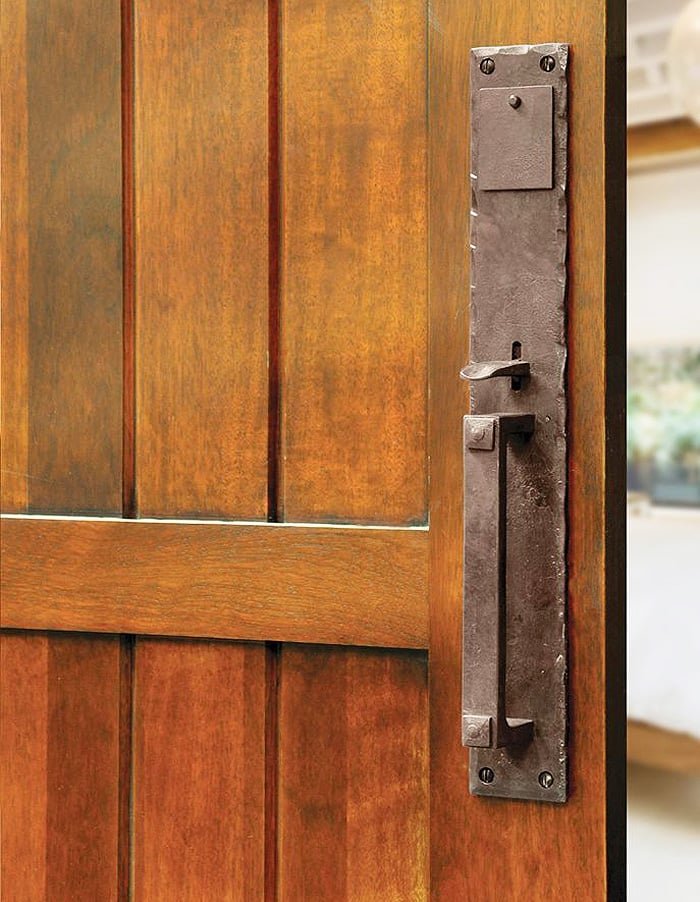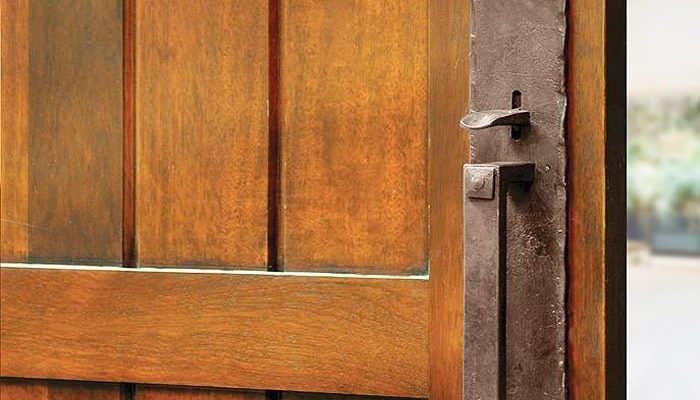
Honestly, maintaining exterior door hardware in historic homes isn’t about slapping on some oil and calling it a day. Each piece, from that ornate Yale lock to a weathered mortise latch, has survived decades—maybe over a century—of hands twisting, weather battering, and keys clicking. If you want to keep those details working smoothly and looking their best, there are smart steps you can take without risking damage or losing that irreplaceable vintage character.
Recognizing the Unique Value of Historic Door Hardware
Before reaching for a wrench, it helps to appreciate why this old hardware matters in the first place. Historic door hardware is more than just a way to seal your front door. It tells the story of your home, often crafted with materials and methods you simply can’t find in big-box stores today. That aged brass knob probably saw more handshakes and history than you can imagine.
Here’s the tricky part: most historic hardware isn’t designed to modern specs. That means using the wrong cleaner or tool can scratch, pit, or even break delicate mechanisms. Modern codes might call for deadbolts and smart remotes, but the old Yale mortise lockset on your 1920s bungalow can still do its job—if you treat it right.
You might be tempted to swap old pieces for shiny new hardware, but think twice. Those original fixtures add value, authenticity, and curb appeal. Plus, many are actually built to last longer than their modern counterparts, given the right care.
So, instead of reaching for a universal replacement remote or lock, take a minute to understand what’s on your door. If you see a company stamp like Yale, Russell & Erwin, or Corbin, you’ve probably got hardware worth saving.
Cleaning Methods That Won’t Damage Original Finishes
You might be wondering, “Can I just scrub these old handles and locks with soap and water?” Here’s the honest answer: it depends, but less is often more. Abrasion and harsh chemicals can strip away patina, destroy finishes, or even corrode older metals.
- For basic dust and grime: Try a soft microfiber cloth lightly dampened with water. Gently wipe—don’t scrub.
- For sticky residues or built-up gunk: Use a mild, pH-neutral soap diluted in water. Always test on a hidden spot first.
- For brass or bronze with a green patina: That’s called verdigris, and it’s actually protective. Don’t remove it unless it’s flaking or sticky.
- Avoid: Ammonia, harsh household cleaners, steel wool, and abrasive pads.
If you’re cleaning something especially delicate—like an ornate Victorian escutcheon—use a soft toothbrush to work gently into crevices. And always dry every part thoroughly to prevent future rust or tarnish.
If you have a lacquered finish, don’t use polish at all. Lacquer is meant to protect, and polish will just break it down. Sometimes, the best thing you can do is a light dust and leave the natural age alone.
Lubricating Hinges, Locks, and Latches—The Smart Way
If your exterior door hardware squeaks, sticks, or grinds, it probably needs lubrication. But here’s the catch: not all lubricants are created equal, and the wrong type can gum up vintage mechanisms or attract dirt.
Let me explain:
- Graphite powder is great for old lock cylinders—it’s dry, so it won’t collect grime.
- Light machine oil (like 3-in-1) works for hinges and latches, but use sparingly. Too much can seep into wood and stain it.
- WD-40 can loosen stuck parts, but it’s not a lasting lubricant. If you use it to free up a frozen lock, follow up with graphite.
Skip grease or heavy oils—these can create sticky build-up inside fine old parts. And always wipe away excess after lubricating. If you notice powdery white residue (from corrosion), avoid trying to “work it out” with lubricant; that may need gentle cleaning or more serious troubleshooting.
For mortise locks—which are common in historic homes—lubricate both the latch and the internal mechanism. If things still aren’t smooth, it might be time to reset the hardware or call a qualified restoration pro.
Protecting Against Weather and Moisture
Exterior doors live a tough life. Sun, rain, snow, and humidity all work hard to dull finishes, rust screws, and warp frames—especially with old hardware made from non-stainless metals. Prevention is key.
Here’s what you can do:
- Check and repair weatherstripping to keep moisture and drafts out. Old strips shrink and crack over time.
- Apply a thin wax coating (like Renaissance Wax) to exposed brass, bronze, or iron. This repels water and slows down tarnishing.
- Examine screws, plates, and hinges for rust or loose fits—especially after heavy rain or storms. Tighten as needed, but don’t overtighten soft metal screws.
- Keep door thresholds and sills in good shape so water doesn’t wick up into hardware or woodwork.
If you’re restoring a storm door or replacing a screen, pick materials that match your historic home’s vibe but add extra protection for the main entrance. Sometimes, little details—like a canopy over the stoop—make a big difference in how long your exterior door hardware lasts.
Dealing With Part Replacements: Originals vs. Modern Alternatives
What happens when a part finally wears out or goes missing? Here’s where things get tricky. Matching original hardware can be a puzzle, but it’s usually worth the extra effort.
Start by checking for hidden brand marks or codes—many old Yale, Corbin, or Russell & Erwin pieces have small stamps or numbers. Jot these down, because they’ll help you track down replacements or reproduction parts.
- If you can’t find an exact match, consider restored salvage hardware. Architectural salvage shops, eBay, and specialist dealers often stock compatible old parts.
- Sometimes, a universal remote latch or modern deadbolt looks tempting, but these rarely match the scale or style of a historic door. They also might need you to drill out original woodwork—something best avoided if possible.
- If safety is crucial (say, for rental properties), look for reproduction hardware that’s designed to modern codes but styled to match your old house. Brands like House of Antique Hardware and Baldwin make these.
Don’t forget, even if you install a modern locking system, you can often leave the original escutcheons or handle plates in place for looks. Just be sure nothing interferes with your new code-based or synced remote lock.
Troubleshooting Common Issues With Old Door Hardware
Over time, you’ll almost definitely run into problems with exterior door hardware in historic homes: sticking keys, sagging hinges, or locks that just won’t cooperate. Here’s how to take a smart, low-risk approach.
- If keys stick: Don’t force them. Try a blast of graphite powder. If the cylinder still catches, it could be internal dirt or a warped pin—this might mean a deeper clean or light reset by a locksmith familiar with old Yale or mortise locks.
- If the knob or handle jiggles or spins: Check the set screw. Most old handles use a small screw to anchor the shank. Tighten gently, and don’t overtighten—it’s easy to strip old, soft metal.
- For loose hinges: Fill stripped screw holes with wooden toothpicks or dowels and wood glue, let dry, then reset the screw. This gives the screw something to grip without needing giant anchors.
- If you need to pair a new lock to an old frame: Always measure twice and check for compatibility with the original mortise pocket or mounting holes. Rushing here risks damaging irreplaceable woodwork.
If you ever feel in over your head—if a lock won’t reset, a piece won’t sync up, or something just won’t move—don’t force it. With historic hardware, patience wins every time (and calling a pro saves a lot of heartache).
How Regular Maintenance Keeps Character (and Value) Intact
Consistent care does more than just keep the front door working. It protects the story your home tells—those little details that make historic properties special. Regular cleaning, the right lubricant, and some gentle troubleshooting mean you’re less likely to face big, expensive repairs down the line.
Here’s the thing: when you keep exterior door hardware in top shape, you’re not just avoiding hassle—you’re preserving the home’s curb appeal and maybe even its market value. Future buyers, guests, or even just neighbors will notice those gleaming, original handles and the satisfying click of a well-kept Yale lock.
Plus, there’s something rewarding about knowing you’re caring for history—one tiny screw and worn-smooth handle at a time. That’s why, even if it’s tempting to slap on a modern code-based remote or battery-powered lock, keeping those original pieces synced and functional is usually the best call for both authenticity and longevity.
When to Call a Professional Restoration Expert
Sometimes, even the most careful DIYer hits a wall. Maybe a lock is jammed beyond simple troubleshooting, or a finish is corroding right off. In cases like these, a skilled restoration expert is worth every penny.
Choose someone who specializes in historic hardware—they’ll know how to reset ancient locksets, sync new code-based entry systems without harming old wood, and even recast missing parts. Often, a professional can restore function and finish without replacing any original pieces, keeping your home’s integrity intact.
Don’t be afraid to ask tough questions: Can you preserve every original part? Will this restoration require drilling new holes? Is the finish safe for long-term use outdoors? The right pro will walk you through each step, explain their process, and treat your hardware—Yale, Corbin, or otherwise—with respect.
Remember: if you’re ever unsure, it’s safer to pause and ask. Historic hardware rewards careful hands, and a little expert guidance can save you from costly mistakes down the road.
Wrapping Up: Why Patience (and Gentle Care) Matter
Caring for exterior door hardware in historic homes isn’t always fast or easy. But honestly, that’s part of the appeal. There’s something satisfying about polishing a century-old knob, syncing a vintage latch, or resetting an old Yale lock to work smoothly again. Every tweak, oil, and gentle clean helps connect you to the long story of your home.
So, next time you’re tempted to swap out those “fussy” old fixtures for something new and easy, pause. With routine checks, a smart cleaning game plan, and a little patience, you’ll help those beautiful old doors swing open for decades more—making your historic home’s story last even longer.
